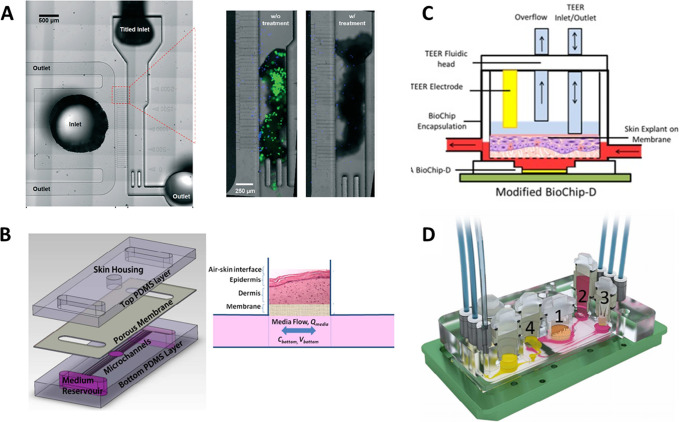FIG. 4.
Transferred skin-on-a-chip platforms. (a) Device developed for studying a neutrophil response to skin infection, where the circuit for blood circulation and the channel for the skin biopsy can be appreciated. The magnification shows the presence of bacteria in the skin fragment without and with antibiotic treatment. Republished with permission from Kim et al., Lab Chip 19, 3094–3103 (2019). Copyright 2021 Royal Society of Chemistry, permission conveyed through Copyright Clearance Center, Inc.68 (b) Pumpless chip with transferred skin designed for testing HSEs viability and maintenance. Skin fragment is placed inside the hole in the chip. Republished with permission from Abaci et al., Lab Chip 15, 3 (2015). Copyright 2021 Royal Society of Chemistry, permission conveyed through Copyright Clearance Center, Inc.59 (c) BioChip modified to construct a skin-on-a-chip using EpiDerm™ commercial equivalent. Reprinted with permission from Alexander et al., Genes (Basel) 9, 2 (2018). Copyright 2018 Authors, licensed under a Creative Commons Attribution (CCBY) License 4.0.69 (d) Multiorgan platform including intestine (1), liver (2), skin (3), and kidney (4). Republished with permission from Maschmeyer et al., Lab Chip 15, 12 (2015). Copyright 2021 Royal Society of Chemistry, permission conveyed through Copyright Clearance Center, Inc.72

